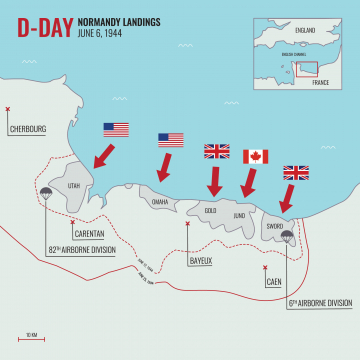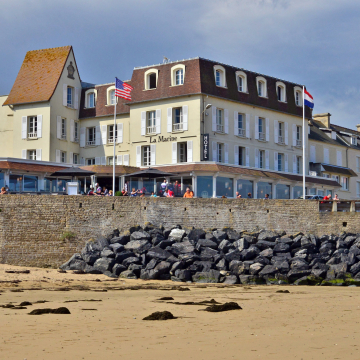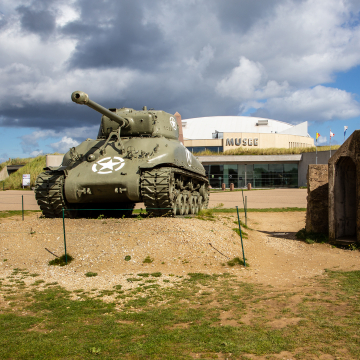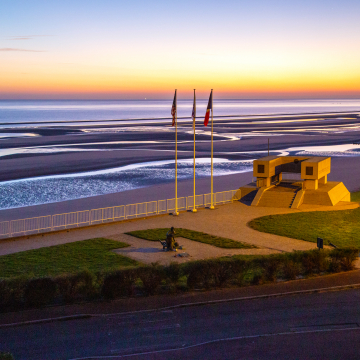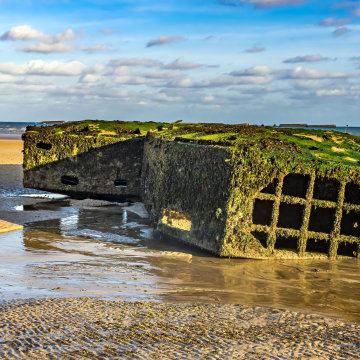Discover The D-Day Landing Beaches | Recommended Places to Stay & Visit
The D-Day landing beaches in Normandy, France, are not just a significant historical site but a deeply moving experience that commemorates one of the most pivotal moments in World War II. These beaches were the setting for Operation Overlord on June 6, 1944, when Allied forces launched a massive assault on Nazi-occupied France. Today, visitors can walk in the footsteps of those brave soldiers and gain a profound appreciation of the sacrifices made during the largest seaborne invasion in history.
Omaha Beach is perhaps the most famous of the landing sites, often referred to as "Bloody Omaha" due to the heavy casualties suffered by American forces. The beach itself is a serene, sandy stretch today, but the nearby Omaha Beach Memorial Museum provides a stark reminder of the fierce battles that took place. The museum features exhibits with personal stories, photographs, and military artifacts that offer a glimpse into the soldiers' experiences.
Not far from Omaha Beach is the Normandy American Cemetery and Memorial. This cemetery is the final resting place for nearly 9,400 American soldiers who lost their lives during the D-Day landings and subsequent operations. The perfectly aligned white crosses and Stars of David are a poignant sight, set against the backdrop of the English Channel. The visitor centre here is well worth a visit for its detailed accounts of the invasion and the stories of those who served.
Utah Beach, another key landing site for American forces, is less crowded than Omaha but equally significant. The Utah Beach Museum is located in an original German bunker and offers an extensive collection of military vehicles, weapons, and personal items from the soldiers. One of the standout exhibits is a restored B-26 Marauder bomber, which played a crucial role in the success of the landings.
For British and Canadian history, Gold Beach and Juno Beach are essential stops. At Gold Beach, the Arromanches 360 Circular Cinema provides a powerful 360-degree film experience that immerses visitors in the events of D-Day using historical footage. Arromanches is also home to the remains of the artificial Mulberry Harbour, which was crucial for supplying the Allied forces after the initial landings.
Juno Beach, where Canadian forces landed, has the Juno Beach Centre. This museum focuses on the Canadian war effort and contributions to the liberation of Europe. The centre's exhibits include personal stories, interactive displays, and a memorial dedicated to the soldiers.
Sword Beach marks the easternmost point of the landing sites, where British forces came ashore. The nearby Pegasus Bridge Museum commemorates the daring glider assault that captured this vital bridge just after midnight on D-Day. The museum includes a replica of a Horsa glider, artifacts from the operation, and the original bridge itself, which has been preserved.
Beyond the beaches, the town of Bayeux is an excellent base for exploring the region. Known for the Bayeux Tapestry, which depicts the Norman Conquest of England in 1066, the town also has a charming medieval centre with narrow streets, half-timbered houses, and the stunning Bayeux Cathedral.
When visiting the D-Day landing beaches, it's essential to take time to reflect on the immense scale of the operations and the bravery of the soldiers who fought there. Whether you're a history enthusiast or simply a traveler looking to understand more about this crucial moment in history, the Normandy beaches offer a deeply moving and educational experience that is truly unique.

